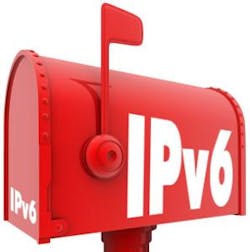In the wake of the announcement that there are no more unallocated IPv4 addresses, operators and observers say that the cable industry is well prepared for the transition to the IPv6 address scheme.The relatively limited number of addresses in the IPv4 pool always has been a potential threat to the viability of the Internet. The dark cloud grew as demand created by the growth machine-to-machine communications and the explosion of mobility steadily eroded the address reservoir.The reservoir just recently went dry last week. Until now, Internet addresses were allocated by the Internet Assigned Number Authority (IANA) at the request of five regional address registries, including the American Registry for Internet Numbers for North America (ARIN). They were delivered in bundles, known as “/8s” (pronounced “slash eights”).The agreement called for a change in procedure when the last five /8s were reached. At that point, the remaining /8s were to be doled out to each of the regions. That is what happened last week. Each is now left with that final /8 and the remnants of other allocations that for some reason weren’t used or became available somehow became available. Once those sources are exhausted, no new IPv4 customers will be accommodated.The depletion isn’t an immediate crisis. It is, however, a signal that putting the new address scheme in place has moved to the top of the priority list, whether ISPs like it or not. The good news for the cable industry, according to observers, is that a majority of operators have long understood the gravity of the situation and have been proactively planning for the coming of IPv6. Comcast last week said through a blog entry that it turned up 25 IPv4 and IPv6 “dual stack” customers in the Littleton, CO, area in mid-January. The post says that the number has expanded since then, and that the technology soon will be exported to other areas.
Comcast Gets ItComcast is taking a straightforward approach, says ARIN President and CEO John Curran. “They are rolling IPv4 and v6 all the way to customer LAN -- the living room -- over wireless or wired network, whatever they are using. If they can get v6 turned on all the way to customer they have the benefit of not having to handle the transition. Those with v6 [devices] will access via v6, those with v4 through v4.”The level of complexity is high. A way must be found to support all the existing IPv4 and the increasing number of IPv6 devices. Jeff Finkelstein, the senior director of network architecture for Cox, reports that the MSO has taken a five-step approach in its preparations: Auditing, “preparing for address diversity” – in other words, running parallel addressing schemes -- management of IPv6 deployment, training and security.
A Variety of ApproachesFinkelstein says that the MSO is looking at three approaches. For many ISPs, the preferred transition technology is running a dual stack, as Comcast is. Cox is developing dual stack and also is looking at tunneling of one protocol through the other and Network Address Translation (NAT) and other translation technologies that enable IPv4 addresses to serve more than one user.Tests and other developmental activities are ongoing, Finkelstein explains. He wouldn’t say when tests will be announced, but does expect it to be in the short term. “It depends on when we have enough of the back office systems, the BSS and OSS, in place,” he says. “The last think we want is for a customer to have to type in an IPv6 address.”Like any other big project, the key is dividing it into smaller pieces. “When you look at the scope of deployment of IPv6 it can appear to be overwhelming,” Finkelstein says. “But we believe when you plan efficiently and take it one step at a time, it becomes very manageable.”Incognito CTO Chris Busch says that the cable industry has been well served by CableLabs. “DOCSIS 3.0 when it came out was an IPv6-capable technology,” he explains. “Beyond that has been the addition of IPv6 functionality that can be back-ported into DOCSIS 2.0.”Busch adds that work beyond the core IPv6 networking functionality that deals with vital issues such as network management and surveillance is getting started in earnest. “We are starting to see some painting around the edges of the ancillary systems that come into play,” he says.How an operator can best get to IPv6 depends on the technologies it now has in place, how many IPv4 addresses are left, its business goals and other issues that are unique to each MSO. “Most operators would like to go dual stack off the bat,” says Steve Harris, the director of advanced network technologies program development for SCTE. “Some do not have the v4 address space left. The pool is different for each. At the end of the day, everyone has to get to native IPv6.”Though observers give the industry generally good marks on an issue that would have been easy to ignore, the picture isn’t universally bright. Dave Kresse, CEO of test equipment vendor Mu Dynamics, says that Comcast and Cox have been leaders in IPv6 preparations. Some others haven’t reacted as proactively, however. “Certainly, there is a stratification within the cable industry,” he points out. “There are operators at the leading edge and some that are laggards. I think those laggards will really struggle to not go through pain in the transition.”Carl Weinschenk is a reporter at BTR. Reach him at [email protected].
Comcast Gets ItComcast is taking a straightforward approach, says ARIN President and CEO John Curran. “They are rolling IPv4 and v6 all the way to customer LAN -- the living room -- over wireless or wired network, whatever they are using. If they can get v6 turned on all the way to customer they have the benefit of not having to handle the transition. Those with v6 [devices] will access via v6, those with v4 through v4.”The level of complexity is high. A way must be found to support all the existing IPv4 and the increasing number of IPv6 devices. Jeff Finkelstein, the senior director of network architecture for Cox, reports that the MSO has taken a five-step approach in its preparations: Auditing, “preparing for address diversity” – in other words, running parallel addressing schemes -- management of IPv6 deployment, training and security.
A Variety of ApproachesFinkelstein says that the MSO is looking at three approaches. For many ISPs, the preferred transition technology is running a dual stack, as Comcast is. Cox is developing dual stack and also is looking at tunneling of one protocol through the other and Network Address Translation (NAT) and other translation technologies that enable IPv4 addresses to serve more than one user.Tests and other developmental activities are ongoing, Finkelstein explains. He wouldn’t say when tests will be announced, but does expect it to be in the short term. “It depends on when we have enough of the back office systems, the BSS and OSS, in place,” he says. “The last think we want is for a customer to have to type in an IPv6 address.”Like any other big project, the key is dividing it into smaller pieces. “When you look at the scope of deployment of IPv6 it can appear to be overwhelming,” Finkelstein says. “But we believe when you plan efficiently and take it one step at a time, it becomes very manageable.”Incognito CTO Chris Busch says that the cable industry has been well served by CableLabs. “DOCSIS 3.0 when it came out was an IPv6-capable technology,” he explains. “Beyond that has been the addition of IPv6 functionality that can be back-ported into DOCSIS 2.0.”Busch adds that work beyond the core IPv6 networking functionality that deals with vital issues such as network management and surveillance is getting started in earnest. “We are starting to see some painting around the edges of the ancillary systems that come into play,” he says.How an operator can best get to IPv6 depends on the technologies it now has in place, how many IPv4 addresses are left, its business goals and other issues that are unique to each MSO. “Most operators would like to go dual stack off the bat,” says Steve Harris, the director of advanced network technologies program development for SCTE. “Some do not have the v4 address space left. The pool is different for each. At the end of the day, everyone has to get to native IPv6.”Though observers give the industry generally good marks on an issue that would have been easy to ignore, the picture isn’t universally bright. Dave Kresse, CEO of test equipment vendor Mu Dynamics, says that Comcast and Cox have been leaders in IPv6 preparations. Some others haven’t reacted as proactively, however. “Certainly, there is a stratification within the cable industry,” he points out. “There are operators at the leading edge and some that are laggards. I think those laggards will really struggle to not go through pain in the transition.”Carl Weinschenk is a reporter at BTR. Reach him at [email protected].






